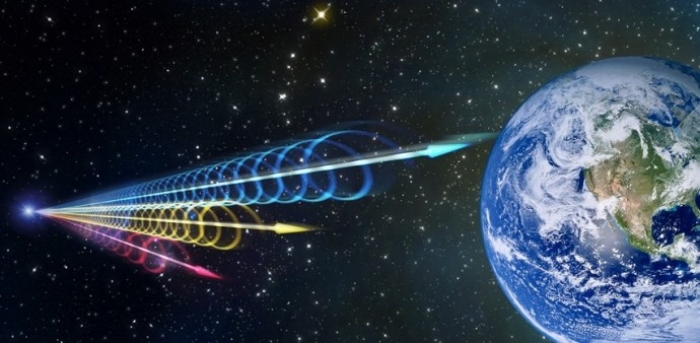Now scientists have suggested that they are coming from an "extreme" environment. Such a situation is thought to form around black holes, though could be the result of other strange astrophysical circumstances.
The signals appear to be coming from somewhere with very strong and very rare magnetic fields. Such a situation is thought to be the result of being in the area around a black hole, though could come from other causes.
Those findings came from a study that looked at one of the bursts called FRB 121102. That's the only one of the incredibly bright signals from which there have been repeated bursts, making it the most reliable for researchers to study.
By looking intensely at that bursts, using the huge Arecibo Observatory telescope, scientists were able to understand how the message is polarised – or, in other words, whether it had twisted on its way down to Earth. They found that twisting appeared to suggest that it had come from the strange source, such as a massive black hole.
While such a behaviour doesn't necessarily suggest aliens – and indeed might imply the opposite – the research is being keenly watched by astronomers involved in the search for extra-terrestrial intelligence. ""We can not rule out completely the ET hypothesis for the FRBs in general," said Vishal Gajjar, one of the scientists on the project and a SETI researcher.
The project has been supported, for instance, by Breakthrough Listen – a major project to try and find life elsewhere in the universe. The project, funded by Russian entrepeneur Yuri Milner, is spending $100 million to look for clues.
Now Dr Gajjar hopes to get samples from all of the other remaining fast radio bursts to try and understand their characteristics, and where exactly they might be coming from.
The dependable burst known as FRB 121102 has been picked up more than 200 times from the same source. It appears to be coming from a dwarf galaxy that is about 3 billion light years from us – and the fact it can be seen from all the way across the universe is testament to how bright it is.
The environment surrounding the signal appear to be entirely unique in the universe.
"We estimate the magnetic field and gas density surrounding the blast source, and we can link them, for example, with a model involving a young magnetar – a neutron star with an especially large magnetic field – to the central engine that produces the bursts," said James Cordes, a professor of astronomy at Cornell University.
Scientists now hope to do more work both to explore the bursts themselves and try and understand how such a star could be throwing the shot of energy all the way through the universe so that it can reach us.
Read original article on the Independent.
More about: #science
















































